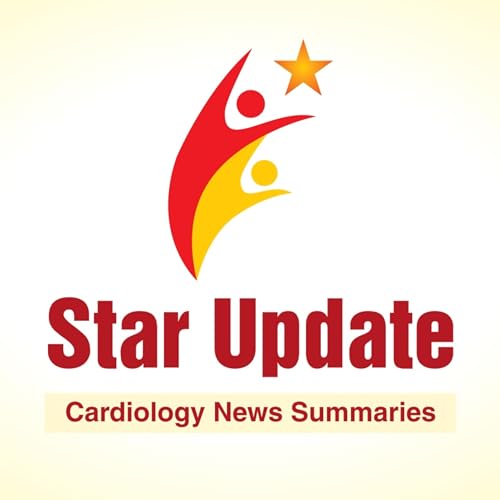
The use of beta-blockers for heart failure with reduced ejection fraction in the era of SGLT2 inhibitors - are we still afraid to up-titrate?
No se pudo agregar al carrito
Add to Cart failed.
Error al Agregar a Lista de Deseos.
Error al eliminar de la lista de deseos.
Error al añadir a tu biblioteca
Error al seguir el podcast
Error al dejar de seguir el podcast
-
Narrado por:
-
De:
The use of beta-blockers for heart failure with reduced ejection fraction in the era of SGLT2 inhibitors - are westill afraid to up-titrate?
Heart Vessels . 2025 Sep;40(9):797-804.doi: 10.1007/s00380-025-02525-7.
Abstract
Beta-blockers are one of the four major pillars of guideline-directed medical therapy (GDMT) for heart failure with reduced ejection fraction (HFrEF). The therapy has presented the best effects when up-titrated to evidence-based target doses. Despite their proven benefits, physicians have traditionally shown reluctance to up-titrate beta-blockersbecause of their negative inotropic and chronotropic effects. The effects of newly introduced sodium-glucose cotransporter 2 inhibitors (SGLT2I) in treating heart failure with reduced ejection fraction might open more room for adequate beta-blockers up-titration. The goal of this study was to evaluate the up-titration practice, and impact of target doses of beta-blockers in patients with heart failure with reduced ejection fraction receiving SGLT2I. This is aprospective cohort study involving patients with heart failure with reduced ejection fraction receiving SGLT2I therapy. Baseline use and dosing to the evidence-based targets were examined. We compared the groups of patientsreceiving maximally titrated beta-blockers versus incompletely titrated. Primary outcome was composite of (1) rehospitalization or revisit to emergency unit due to the heart failure; (2) all-cause death and major adverse cardiacevents (MACE). Secondary outcomes were heart rate at rest, left ventricular ejection fraction, NT-proBNP, and NYHA status at 6 and 12 months of follow-up. Study endpoints were documented via telephone interviews, regular outpatientfollow-up, or by electronic hospital records. This study included a total of 458 patients with median follow-up time of 365 (186-502) days. A total of 122 (26.6%) patients hadbeta-blockers maximally up-titrated. The results show that adherence to maximal target doses of β-blocker therapy significantly reduces hazard of death or major adverse cardiac events comparing to not using maximal doses of β-blocker (factor 0.43). Hazard reduction was not statistically significant for composite of rehospitalization or revisit to emergency unit due to HF. Maximal doses of beta-blockers did not result in a significant decrease in resting heart rate. Our real-world data have highlighted the prevalence of incomplete titration of beta-blockers. Although it has been shown that evidence-based target dosing of beta-blockersreduces death and major adverse cardiac events, there is still room for improvement with up-titrating beta-blockers in eligible patients.
Disclaimer:
Lupin makes no representation or warranty of any kind, expressed or implied, regarding the accuracy, adequacy, validity, reliability, availability, or completeness of any scientific information shared by the HCP on the STARUPDATE podcast. You should not allow the contents of this to substitute for your own medical judgment, which you should exercise in evaluating the information on this website.


